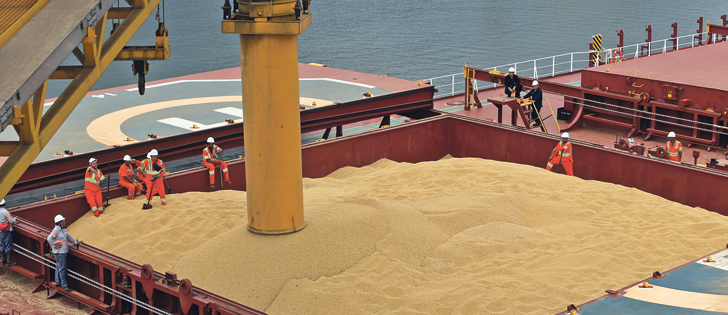The adage is that big crops get bigger but that does not appear to be the case in U.S. soybeans this year.
The trade last week expected the United States Department of Agriculture to raise its yield forecasts for corn and soybeans in its monthly report.
It did raise the corn yield, but it lowered the soybean yield by 0.4 bushel to 49.5 bu. per acre.
That does not sound like much, especially when USDA raised its forecast of harvested acres with the end result keeping its total production estimate at 4.43 billion bu., the same as the month before.
Read Also

Flax sector sees omega-3 opportunity
SASKATOON — A global shortage of omega-3 oils could be an opportunity for the flax sector, says an industry official….
But it was enough to shake the trade’s mindset that the soybean crop, already record large, would get bigger in coming crop reports.
Now they think it could get smaller.
The USDA also adjusted its year-end stocks estimate for the 2016-17 crop to 301 million bu., down from 345 million the month before.
That also resulted in a reduction in the 2017-18 year-end stocks forecast, to 430 million bu. from 475 million in September.
The rest of the report’s numbers were negative for corn and wheat prices but the market mainly focused on the soybean numbers causing the oilseed to rally and corn went along for the ride.
The forecasts of even larger world wheat production and global year-end stocks were just more kicks at a bruised and beaten market.
However, the soybean numbers helped to stimulate the canola market so that as this column was written on the morning of Oct. 16, November canola was trading above $500 a tonne for the first time since Sept. 6.
It should be noted that U.S. year-end soybean stocks almost always wind up quite a bit smaller than the USDA forecasts in the fall.
The main reason for the revisions in ending stocks is that the USDA almost always gets it wrong on exports. Demand, particularly Chinese demand, is almost always is stronger than expected.
Often the USDA starts to make the sharp reductions in ending stocks in its late spring and early summer monthly reports. Those adjustments help to lift soybean prices during the summer.
It is also often the case that global soybean year-end stocks wind up smaller than the USDA’s forecasts in the fall. Last year was the exception, with final ending stocks larger than the forecast in the autumn.
This was largely because Brazil’s crop turned out much bigger than expected, leading to increased carryout for that country. Also, Argentina crush and exporters were smaller than expected leading to an increased carryout for that country too.
This year, Brazil and Argentina expect smaller soybean crops but their total supply will still be large because of the big carry-in numbers.
Currently, the USDA forecasts China this crop year will buy 95 million tonnes of soybeans. That is an increase of only 2.5 million over last year, a conservative increase when you consider that the average annual increase over the previous five years was 6.5 million tonnes.
And so we might wonder if the USDA’s current export and year-end stocks forecasts are again conservative.
Maybe, but a story produced by DTN noted that Liwei Zhang, director of market information at China Grain and Oil Information Center, also forecasts 95 million tonnes of imports.
Liwei notes the huge reform underway in China’s agricultural policy could lead to a trend of more modest growth in soybean imports.
The old policy of supporting high domestic corn prices hurt China’s own soybean production and encouraged a larger percentage of relatively cheap soy meal in feed rations.
With new policies lowering domestic corn prices closer to world levels, some of China’s corn acres should switch to soybeans, Liwei said.
Also, China is promoting ethanol production. This will lead to increased production of dried distillers grain that will compete directly with soybean meal and slow the demand for imported soybeans. Liwei sees soybean import annual growth slowing to 3.5 to four million tonnes a year.
But another factor also could influence soy meal demand. The government is cracking down on polluting, smaller hog operations in urban areas that used food scraps as pig feed and is encouraging large, rural, modern operations that use feed mixes that usually have a large component of soy meal.
Clearly there are lots of changes going on in China’s agriculture, so much so that it is impossible to predict exact outcomes.
But if its soybean import growth does slow, it could possibly have big implications for world agriculture.
The growth of Brazil and Argentina into agricultural powerhouses over the past 15 years was possible only because China’s insatiable demand for soybeans could not be met by the U.S. alone.
The trend of the profitability of oilseeds, including canola, over other crops was also supported by China’s soybean demand.
If I gaze into my crystal ball, I think China’s soybean imports will continue healthy at least for the next few years.
The switch to intensive hog production should propel soy meal demand and the switch to bigger domestic soybean production will likely take a few years to take hold.











